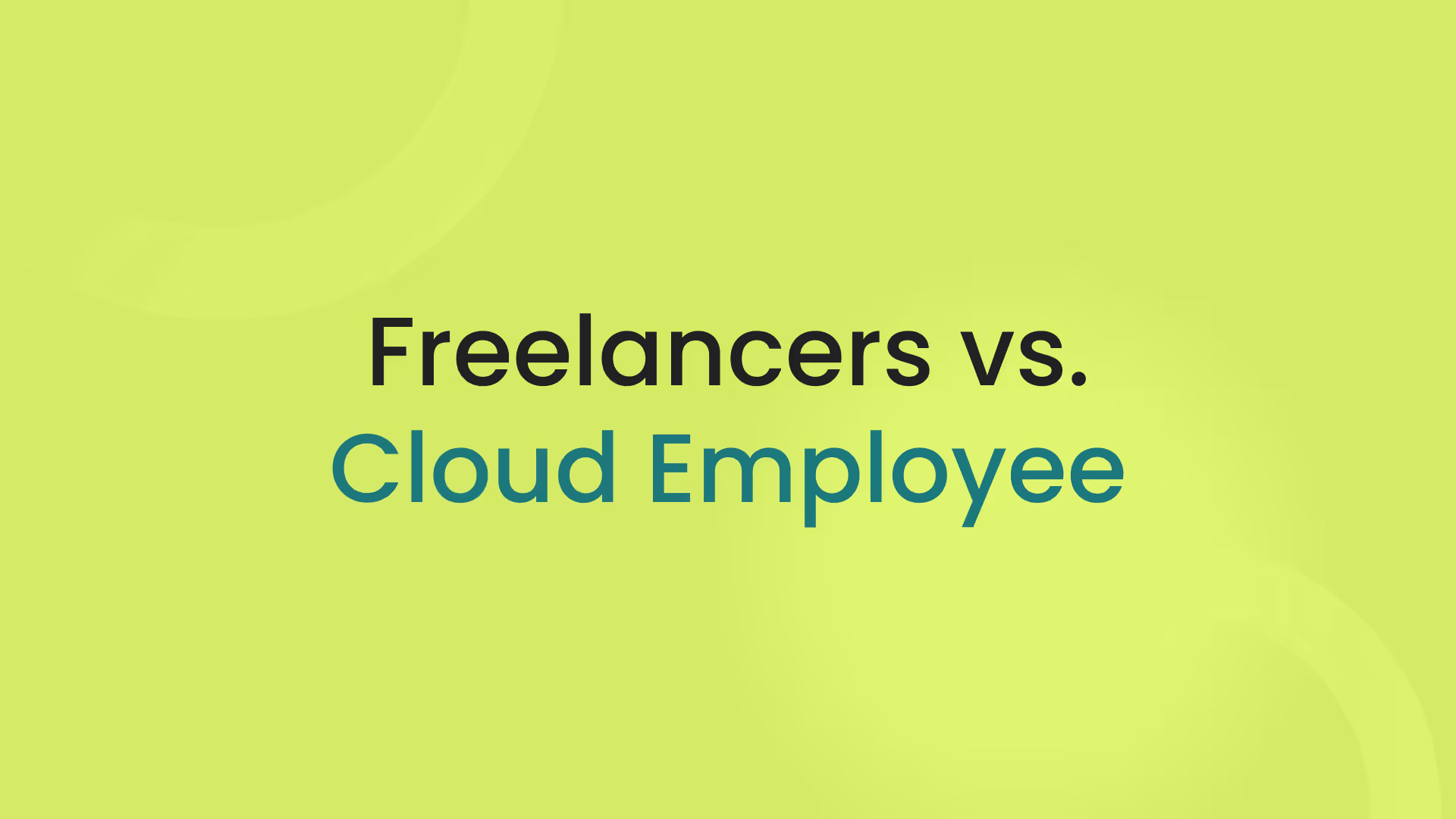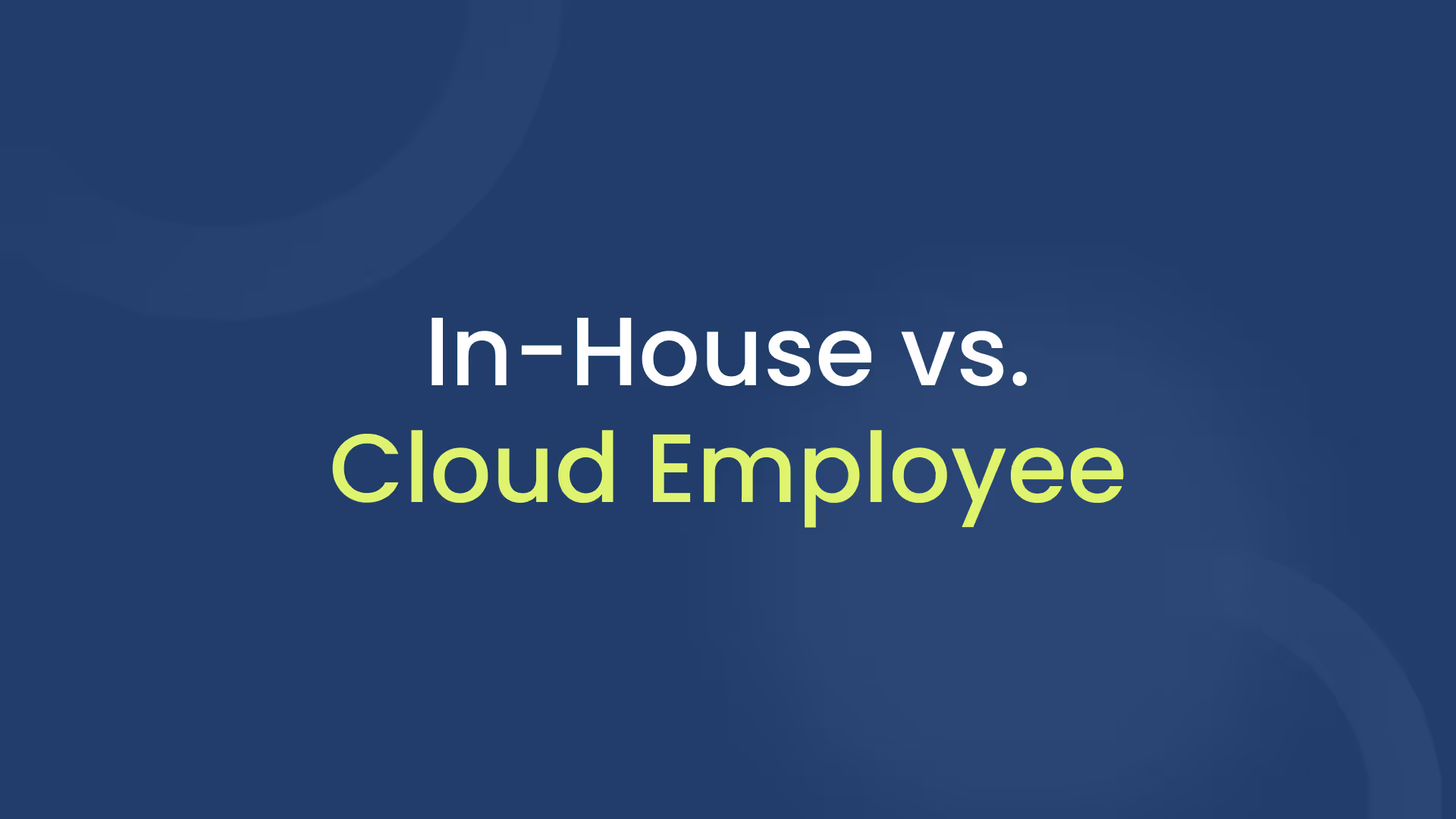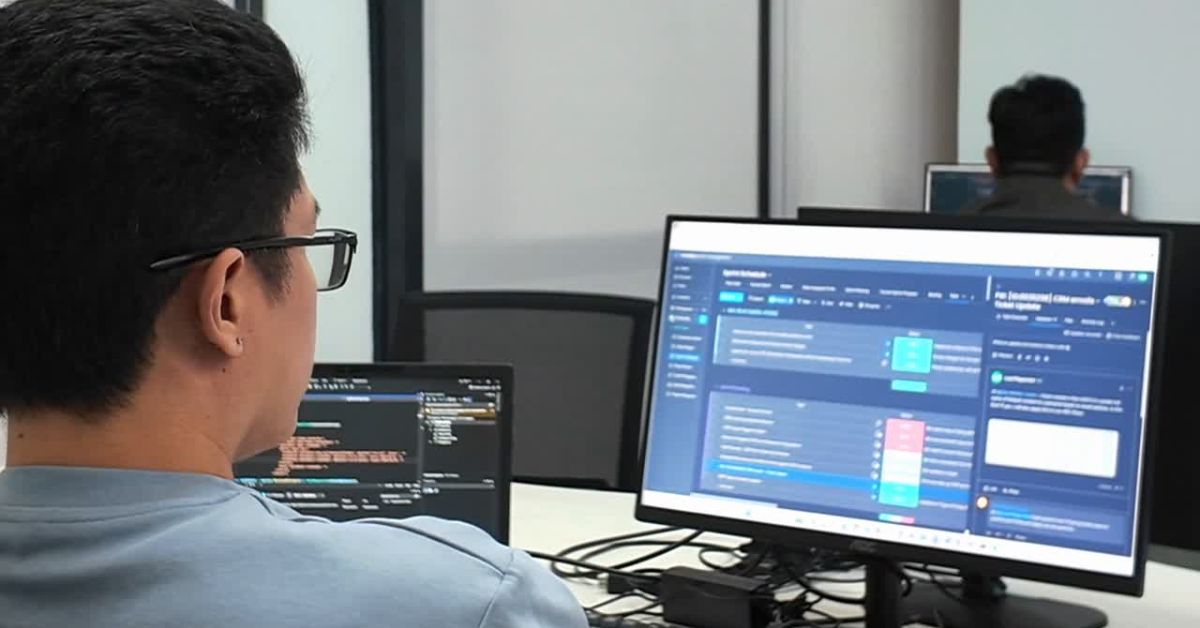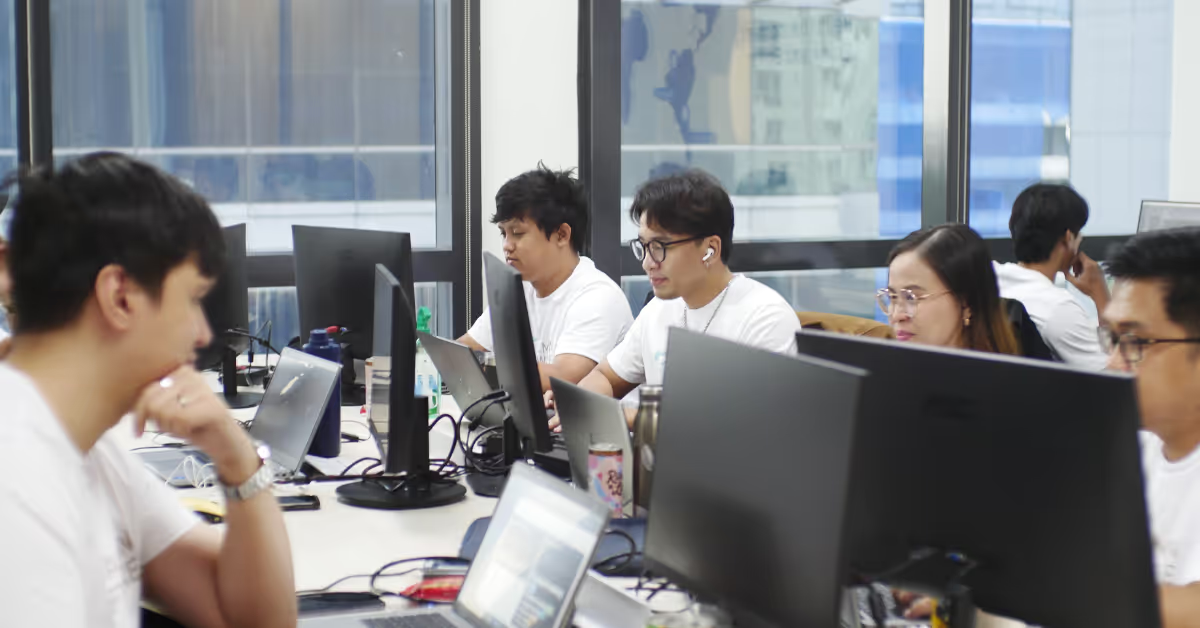Cloud Employee vs. Freelancers

📌 TL;DR
Freelancers offer flexibility and low commitment, but in 2025 their gig mindset, high turnover, and lack of compliance make them unreliable for critical engineering needs. They juggle multiple clients, struggle with alignment, and pose legal and tax risks. Cloud Employee, by contrast, delivers fully dedicated vetted engineers, long-term retention (97%+ beyond two years), and full HR and compliance support, at 50–75% lower cost than in-house hiring.
Freelancers in Context
Freelancer marketplaces like Upwork, Toptal, and Fiverr have opened access to global talent at unprecedented scale. For startups and SMEs, freelancers offer agility, a way to add development capacity quickly, without headcount or legal complexity.
But for CTOs leading long-term product development or scaling distributed teams, the freelancer model increasingly falls short. The lack of exclusivity, weak retention, and absence of compliance structures make freelancers suitable for tactical work, not strategic delivery. As projects scale, inconsistency becomes the cost of flexibility.
How the Freelancer Model Works
Freelancers operate as independent contractors, typically paid hourly or per project.
- For clients: Companies engage freelancers via platforms or personal networks, often with minimal vetting beyond platform ratings. Contracts are lightweight, but so are the guarantees. Most freelancers work across multiple clients simultaneously, creating competing priorities.
- For freelancers: Developers optimise for autonomy and rate, not continuity. Many prefer short-term engagements, prioritising flexibility and variety over embedded team participation.
- For platforms: Marketplaces charge a 10–20% commission but avoid responsibility for HR, taxes, benefits, or compliance. Risk sits entirely with the client.
At small scale, the model’s simplicity works. But for sustained delivery, when code ownership, consistency, and velocity matter, it begins to show its limits.
Process and Delivery Model
Freelancer engagements are transactional by design. The typical workflow looks like this:
- Search and selection: Clients typically create and then post a brief or search profiles on platforms like Upwork or Toptal. Selection depends largely on ratings and portfolio examples.
- Contract and start: Agreements are often hourly or fixed-project. There’s limited onboarding or cultural integration.
- Work execution: Freelancers operate remotely, using their own tools and environments. Oversight depends on client bandwidth.
- Delivery and turnover: Once a task or milestone completes, the engagement ends. Continuity and institutional knowledge are rarely retained.
- Re-engagement or replacement: If successful, freelancers may be rehired, but many move on to other clients, forcing repeated onboarding cycles.
Stacking up against Cloud Employee:
- Cloud Employee’s process is structured, quality-assured, and retention-led, built for continuity.
- Freelancers prioritise short-term flexibility; Cloud Employee provides long-term accountability and stability.
- In Cloud Employee’s model, engineers are dedicated full-time to your projects, not splitting focus across clients.
Evaluation: Strengths and Weaknesses
Strengths
- Speed and flexibility: Freelancers can be contracted quickly, often within days.
- Global reach: Platforms make global sourcing easy.
- Low commitment: Suitable for prototypes or short-lived initiatives.
Weaknesses
- Split focus: Freelancers frequently juggle multiple clients, diluting availability.
- No continuity: Contracts end after delivery; knowledge and momentum are lost.
- Variable quality: Platform ratings don’t ensure technical depth or reliability.
- Compliance risk: Clients carry tax and employment liability.
- Limited oversight: Without embedded management, visibility and accountability are weak.
Cloud Employee’s Model: Sustainable Capacity, Not Ad-Hoc Support
Cloud Employee was designed to address exactly these pain points, enabling CTOs to access global engineering talent quickly but with the control, stability, and accountability freelancers can’t offer.
Process and Delivery Model
- CTO-led technical vetting: Engineers undergo live pair-programming and technical interviews to verify skill, communication, and fit.
- Dedicated engagement: Engineers work exclusively for you, integrating into your workflows, ceremonies, and tools.
- Speed: Rapid access to top-class engineers, fully embedded from day one.
- Retention infrastructure: Managed HR, benefits, training, and performance monitoring deliver 97%+ retention beyond two years.
- Compliance and support: Cloud Employee assumes responsibility for payroll, tax, and employment law across regions, mitigating risk.
Stacking up against freelancers:
- Cloud Employee provides structure and governance where freelancers offer independence.
- Engineers are embedded, not transactional contributors.
- The result is velocity without volatility, sustainable delivery at predictable cost.
Strengths of Cloud Employee vs Freelancers
Interpretation:
- Cloud Employee eliminates volatility by combining freelancer flexibility with enterprise-grade retention and compliance.
- Freelancers remain useful for short bursts of tactical work, but Cloud Employee offers a scalable path to sustained delivery performance.
Pricing Review*
Freelancer Rates (2025)
- US/UK senior freelancers: $80–$150/hour (~$14,000–$26,000/month equivalent)
- Offshore freelancers: $25–$60/hour (~$4,000–$10,000/month equivalent)
Cloud Employee Rates
- LATAM engineers: $6,000/month all-inclusive
- Philippines engineers: $4,500/month all-inclusive
Cost Efficiency Summary
Cloud Employee often matches or beats senior freelancer rates, but with managed retention, compliance, and guaranteed availability.
Note*: These are average costs as a representation of rates from Cloud Employee’s on the ground knowledge, these vary based on seniority, skills, experience, location, and are open to change.
Case Studies
- Travel Tech Client: 35 person team hired, onboarded & managed in a few months. Read case study
- Event Connections: 492 estimated hours saved in recruitment. Read case study
Executive Insight
Seb Hall, CEO and Co-Founder of Cloud Employee, comments:
Freelancers are often a quick fix, not a sustainable growth strategy. Cloud Employee gives CTOs reliable, long-term engineering capability, with stability.
Bottom Line
Freelancers provide flexibility and speed, but their transient nature, lack of accountability, and compliance exposure make them unsuitable for scaling critical engineering functions.
Cloud Employee delivers the same global reach, but with structure, accountability, and longevity.
- Engineers who are dedicated, vetted, and retained, not transactional.
- Predictable costs comparable to or lower than freelancers.
- Full HR, L&D, compliance, and payroll coverage to de-risk operations.
For technology leaders under pressure to deliver at pace and scale responsibly, Cloud Employee bridges the gap between freelance agility and in-house control, building real, sustainable capacity instead of short-term fixes.






